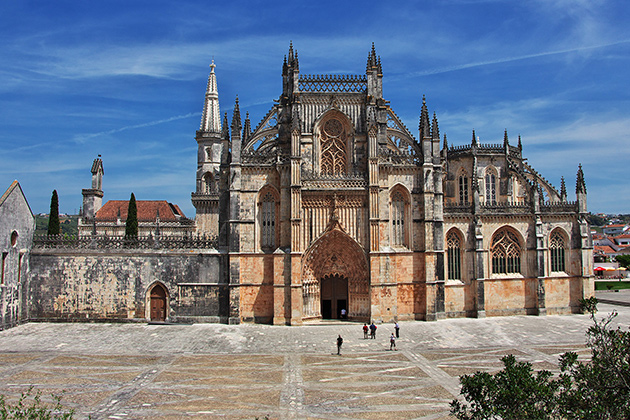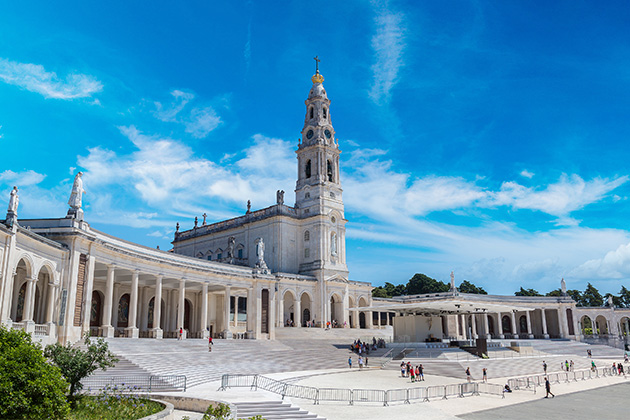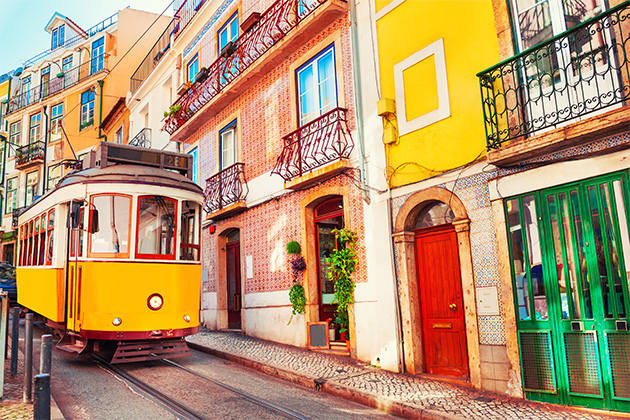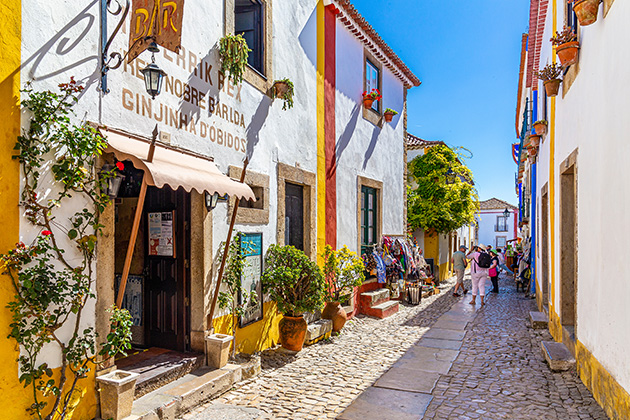
Unesco named it a literary town in 2015 and its unique traditions and beauty, preserved since medieval times, are overwhelming. Read on to find out what to do in Óbidos.
A little history
In 1148, during Portugal’s first dynasty, Óbidos became part of national territory, having been recovered from the Moors. After that it would become part of the dowry traditionally gifted to Portuguese queens, such as Queen Saint Isabel or Phillipa of Lancaster. Looking back, you can conclude that the town has hardly changed. It maintains its medieval charm, its houses decorated with geraniums and bougainvillea’s that bring light and life to the narrow streets.
The landmarks
1. Óbidos Castle
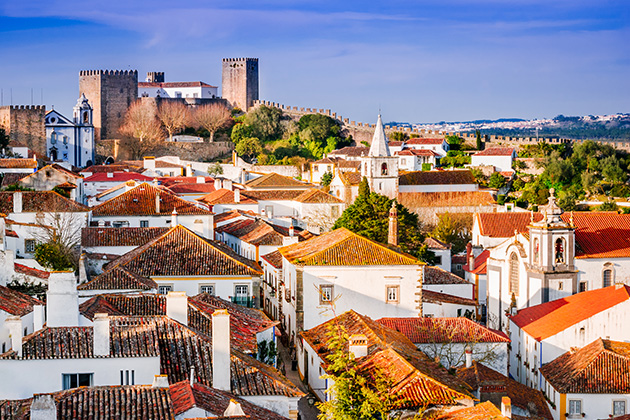
It is thought that the spot where the castle stands had already been occupied in pre-historic times, first by Lusitanians, then Romans, Visigoths and the Muslims who raised it. The motto of the small town’s coat of arms: “Very noble and ever faithful” refers to its strong loyalty to the Portuguese crown, which led it to resist the assaults of the Count of Bologne, later King D. Afonso III, remaining true to King D. Sancho I.
During the succession crisis of 1383-1385, the local magistrate stood by John I of Castille and Beatrix, resisting the troops of the Master of Avis, D. João I, which cost him his life in the Battle of Aljubarrota. During the following century it became the home of D. Leonor, who retreated to Óbidos to mourn the death of her only son.
The 1755 earthquake seriously damaged the structure, but nonetheless the castle would play an important role during the Peninsular Wars and it was from here that the first shots were fired in Napoleon’s defeat in the Battle of Roliça.
Along with the rest of the town, the Castle of Óbidos is classified as a national monument, and the keep was restored in the 40s of the XX Century to become an inn, the Pousada do Castelo.
Considered one of the seven wonders of Portugal, it is currently in excellent condition and is one of the best examples of the blending of Romanic, Gothic, Manueline and Baroque styles that has survived until today.
2. The Church of Santa Maria
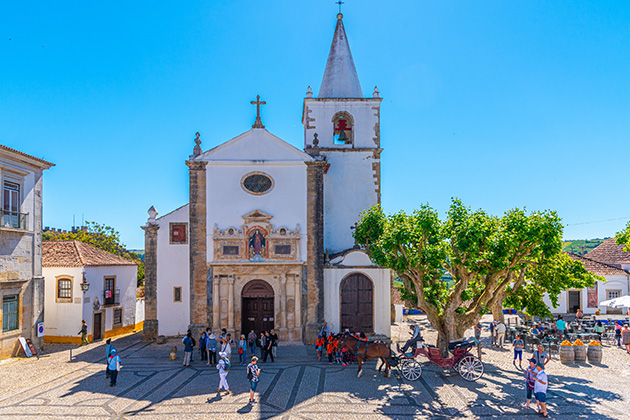
The main church in Óbidos, Santa Maria is built on the foundations of a Visigothic temple that was later turned into a mosque. Construction of the current church began in the XII Century and it would later host the wedding of King D. Afonso V to Isabel, in 1444, when the two were, respectively, 10 and 8 years old.
Since then it has been restored several times and currently the predominant style is that of the Renaissance. Pay special attention to the hand-painted tiles that cover the ceiling and the walls, which date to the XVII Century, as well as to the original paintings of Josefa de Óbidos.
3. Misericórdia Church
Founded in the XVI Century by D. Leonor, and built over the Chapel of the Holy Spirit, the Misericórdia Church, located near the old town hall, is an important building in the history of Portuguese art since its entrance, which dates to 1596, is the first Portuguese work of Baroque art from the Renaissance and Mannerist period.
It is also a shrine to the image of Our Lady of Peace, a gift from Queen Isabel to the previous chapel of the Holy Spirit, and which the faithful of Óbidos are very devoted to.
4. Shrine of Lord Jesus of the Rock (Senhor Jesus da Pedra)
There is more to Óbidos than what is contained by the city walls, so we suggest you visit the Shrine of the Lord Jesus of the Rock, built in 1747 in honour of King D. João V and considered one of the most interesting baroque buildings in Portugal, given its hexagonal structure.
Inside it has three chapels: the shrine itself, dedicated to Calvary, and the side chapels in honour of Our Lady of the Conception and the Death of Saint Joseph. It used to be an important pilgrimage spot and both the Queen D. Leonor and King D. João V visited it often to see the image of the Lord Jesus of the Rock, to which they were quite devoted.
5. Door of Our Lady of Mercy (Senhora da Piedade)
Also known as the door to the Town of Óbidos, it was actually the entrance to Óbidos and is unique in a number of ways. It was built on orders of King João IV, as thanks for the restoration of Portuguese independence in 1640 and inside you’ll find the Chapel of Our Lady of Mercy. Take special note of the XVIII Century tile decoration, representing the Passion of Christ.
6. Church of Santiago
Located within the town walls, it stands out due to its baroque and neo-classic style, having been built in 1186 on orders of D. Sancho. It was almost levelled by the earthquake in 1755, and later rebuilt.
7. Church of St. Peter
A medieval church, founded in the XVII-XIX Centuries, all that remains now are traces of the old gothic entrance and façade, the gold leaf altar and the spiral-stair tower which withstood the earthquake in 1755.
It contains the grave of painter Josefa de Óbidos and is also famous for its baroque altarpiece, which dates to the XVII or early XVIII Century, showing St. Peter receiving the Keys to Heaven from Christ.
8. The Aqueduct
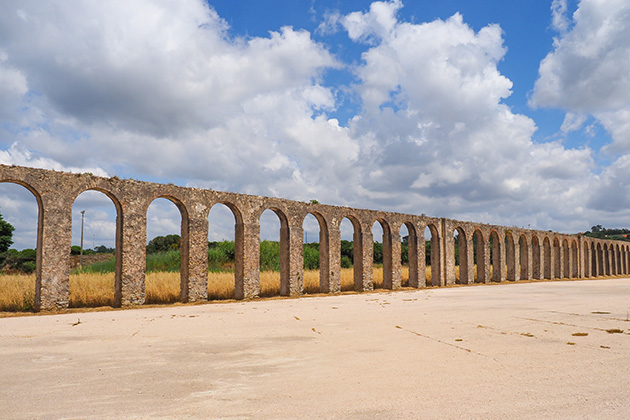
Once more outside of the town walls, you should visit the Óbidos Aqueduct, also known as the Usseira Aqueduct, after the spot where it begins, running 6km to the town itself. It was built upon orders of Katherine of Austria, wife of D. João III, and represents her attempt to modernise Óbidos, supplying it with water. You can only see half of the full thing, however, since three of those six kilometers run under ground.
Attractions you won’t want to miss

Any time of year is great to visit this romantic town, with its flowery and narrow streets. Start by walking along the XIV Century castle wall, that surrounds the town and provides stunning views.
Take a walk along the town’s main street, Rua Direita, and enjoy the colourful houses with their small doors and windows decorated with flowers, stopping to taste the two most famous local specialities – the chocolate and the ginginha liqueur. You should also stop by the Biological Market Bookshop, that has shelves made of fruit boxes and sells books as well as natural produce.
The International Chocolate Fair is held in April, whereas in July and August you can enjoy yourself at the Medieval Market, where you can see how people dressed at the time and try their food. You can also enjoy the troubadours, the dancers and the jesters and try your hand at the crafts of the day or, who knows, meet that special lady or knight in shining armour.
The summer months are usually also used to stage the Classical Baroque Music Season and the Opera Festival. September and October see the town host Fólio, the International Literary Festival and November and December are time for the Christmas Town, when Óbidos dresses up in light, colour and fantasy, bursting with the traditional Christmas magic and charm.
Óbidos and its hiking trails
There are plenty of existing hiking trails. From the Panoramic Rout to the Lagoa Ecopath, the Carteiro Path, the Sour Cherry Path and the Aqueduct path, there is plenty to choose from for hikes to breathe in fresh air and enjoy the magnificent landscapes.
Óbidos and the beaches on the horizon
Less than half an hour’s drive from town you can visit the Lagoa de Óbidos, one of the most beautiful lagoons in the country, in Foz do Arelho. This is an excellent spot for those who enjoy water sports and is the longest lagoon system of the Portuguese coast.
The Bom Sucesso and Rei Cortiço beaches are also a good option on warmer days. The first is located where the lagoon meets the sea and the second, around 11km long, connects to the Baleal Beach.
Óbidos around the table
The fish stews are a must in terms of Óbidos cuisine, and people come from far and wide to try them. We suggest you try one made with fish from Óbidos lagoon, some fried eels or a lamb stew.
As far as desserts are concerned, the egg based trouxas de ovos, lampreias, alcaides, pegadas and pastéis de moura are simply irresistible.
For more information, visit:
> https://www.cm-obidos.pt/
> https://turismo.obidos.pt/site/percursos-pedestres/

